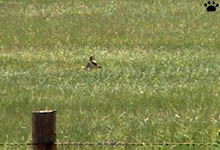
Baby pronghorn antelope hiding in the grass, Como Bluff Dinosaur
Graveyard, Wyoming.
Part 15. The Great Plains.
| Crow Indians called the Great Plains "The
Country of Big Sky". For early European settlers,
it was "The Great American Desert". As soon as they took over, they
converted this seemingly endless sea of grass into pastures and croplands, destroying
most of native people and animals in process. |

Shortgrass
prairie,
Montana |

Mixedgrass
prairie,
Oklahoma |
The eastern parts of the Plains were once occupied
by tallgrass prairie. Blaksoil grasslands were optimal for industrial agriculture,
and they have been converted into fields everywhere in the world, except Mongolia.
The remaining patches of tallgrass prairie in the US are so small that you can
see fields and villages from any point. Mixed-grass prairies further west are
better preserved, and shortgrass prairies still cover large parts of the Great
Plains. Even the tiniest plots of unploughed land in prairie zone can be worth
visiting if you are interested in such things as photographing wildflowers or
butterflies. There are also forests in the prairie zone, mostly along the rivers,
and many forest animals are more easy to see here than in their main range further
east. |

Tallgrass
prairie,
Kansas |

Tallgrass
prairie,
Texas |
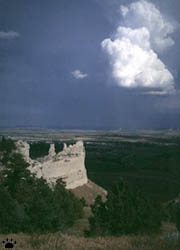
Scotts Bluff, Nebraska. |
The Plains are not just a flat grassland. There
are isolated mountain ranges, cliffs, and canyons. The northernmost part is covered
with aspen parklands and even boreal forests.
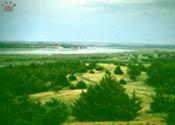
Groves of Eastern redcedar (Juniperus virginiana), Niobrara
River, Nebraska. |

Black Hills, South Dakota. |

Salt Plains,
Northern Territories |
Wood Buffalo Nat'l Park
in Canada is a large country of taiga, salt grasslands, pit bogs and willow-covered
wetlands, situated at the very crossroads of East and West, at the northern edge
of the Great Plains. |
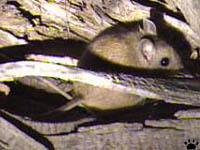
Deer mouse (Peromyscus maniculatus) is the
most common rodent of the Plains. Wyoming. |
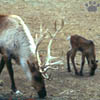 |
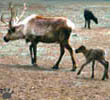 |
 |
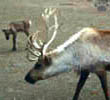 |
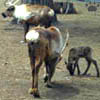 |
| Woodland caribou (Rangifer tarandus
caribou), Peace River, Alberta. |

Hay River Falls,
Alberta. |
Very few people visit it, and almost
nobody drives the 1000-mile road to the park. In fact, the road to Wood Buffalo
is as interesting as the park itself. This road also provides a chance to see
some animals not so easy to find further south, such as great gray owl (Strix
nebulosa), lynx, wolverine, fisher (Martes
pennantii), marten (M. americanus), silver fox (Vulpes vulpes f.argenteus),
wolf and caribou. |

Golden eagle,
Alberta. |

Wolverine (Gulo gulo),
High Prairie, Alberta. |

Silver fox,
Mt.Reinier, USA. |
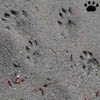
Otter tracks,
Frazier Cyn., Brit. Col. |
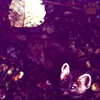
American marten,
Fort Smith, N. Terr. |

Gray wolf (Canis lupus),
Grand Cache, Alberta. |
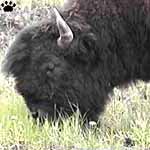 Plains bison, Yellowstone
Plains bison, Yellowstone
National Park, Wyioming. |
Unlike wood bison, Plains bison can now be
seen in many places of the West.

Plains bison (B. bison bison),
Liard River, British Columbia. |
 Plains bison, Liard River,
Plains bison, Liard River,
British Columbia. |
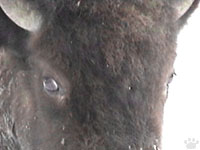 |
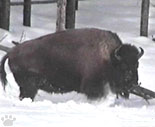
Plains bison,
Yellowstone, Wyoming. |
 |
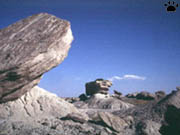
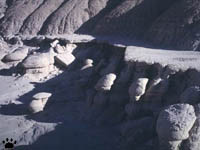
Rock formations, Toadstool Park,
Nebraska. |
Old bison trails still crisscross the prairie,
and can sometimes be difficult to tell from much older trails left by long-extinct
animals millions of years ago, such as rhinoceros trails in a weird place called
Toadstool Park.
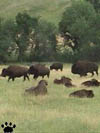
Bison rut, Wind Cave
Natl' Park, S. Dakota. |
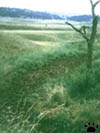
Bison trail, Wind
Cave, S. Dakota. |
|
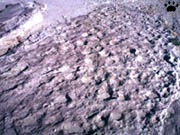

26 million year-old rhino trails,
Toadstool Park. |
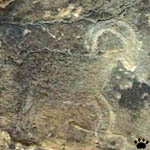
Petroglyph, Picture Canyon,
Comanche Nat'l Grassland,
Colorado. |
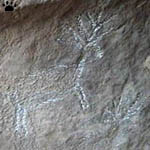
Petroglyph, Picture Canyon,
Comanche Nat'l Grassland,
Colorado. |
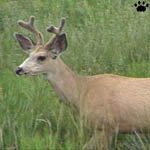
Mule deer (Odocoileus
hemionus), Comanche Nat'l
Grassland. |
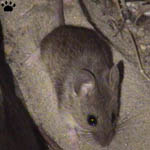
Brush mouse (Peromyscus
boylii), Comanche Nat'l
Grassland. |
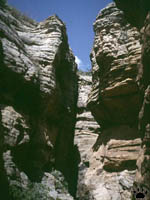
Picture Canyon, Comanche
Nat'l Grassland, Colorado. |
The southern part of the Plains has a few extinct
volcanoes and is crisscrossed by deep canyons. These canyons serve as corridors
of more diverse habitat, allowing plants and animals from Eastern and Western
parts of North America to penetrate deep into the grasslands and sometimes cross
them. Many woodland and rock species can be found in these canyons hundreds of
miles from the nearest forest or mountains. Native Americans also used them a
lot. |
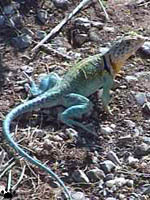
Collared lizard (Crotaphytis
collaris), Cimarron Cyn., Oklahoma. |
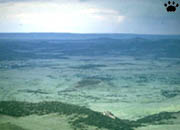
View from Capulin Volcano, New Mexico. |
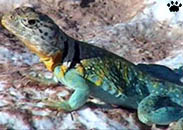
Collared lizard, Cimarron Canyon, Oklahoma. |

Grand Mesa Volcano, New Mexico. |
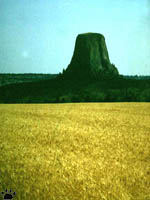
|
Probably the most unique landform of the Plains
is an odd volcanic rock called Devil's Tower.
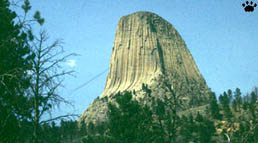 Devil's Tower, Wyoming.
Devil's Tower, Wyoming. |
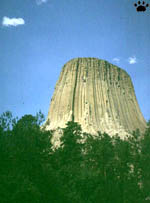 |
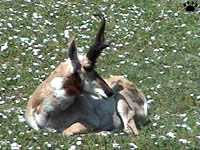
Male pronghorn (Antilocapra americana),
Wind Cave Nat'l Park, South Dakota. |
The most common large mammal of the grasslands
is pronghorn antelope, the only surviving member of an ancient family. They are
particularly abundant in Wyoming. |
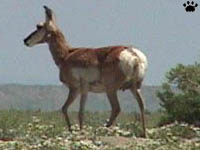
Female pronghorn, Thunder Basin
Nat'l Grassland, Wyoming. |
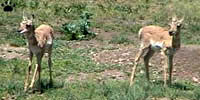
Pronghorn twins, Como Bluff, Wyoming. |
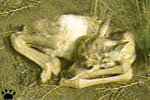
Newborn pronghorn, Como Bluff. |
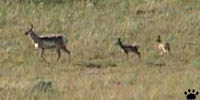
Pronghorn family, Bullion Butte, N. Dakota. |
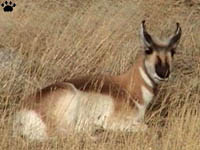
Male pronghorn without antlers, Wyoming. |
Pronghorn actually have antlers, not horns, and
shed them every year. They are also among the few ungulates who have twins more
often than single calves. |

Male pronghorn, Wyoming. |
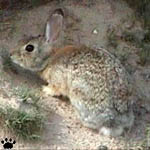
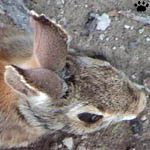
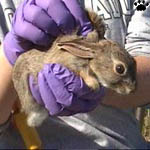
Desert cottontails (Sylvilagus
audubonae), Boulder, Color. |
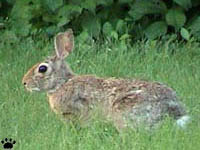
Eastern cottontail (S. floridanus),
Black Kettle Nat'l Grassland, Oklahoma.
Small mammals, particularly rodents, are surprisingly diverse in the Great Plains,
and are essential for normal functioning of prairie ecosystem. I have a special
page about prairie rodents, their friends and enemies.
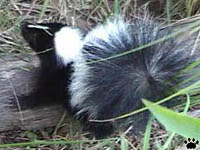
Baby striped skunk (Mephitis mephitis), Nebraska Nat'l Forest. |
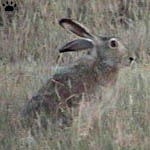
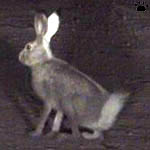
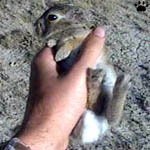
White-tailed jackrabbits (Lepus
townsendii),Thunder Basin. |
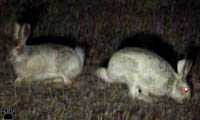 |
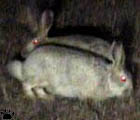 |
 |
| Courtship of white-tailed jackrabbits,
Thunder Basin National Grassland, Wyoming. |
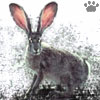
Black-tailed jackrabbit,
Denver, Colorado. |
Of the two Plains hare species, only white-tailed
jackrabbit (Lepus townsendii) turns partially white in winter. The more
southern species, black-tailed jackrabbit (L. californicus) stays more
or less the same year-round. White-tailed jackrabbit is now becoming rare, probably
because it is too easy to spot in snow-less winters caused by global warming. |
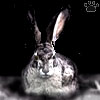
Black-tailed jackrabbit,
Limon, Colorado. |
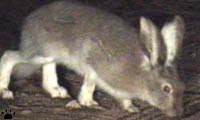 |
 |
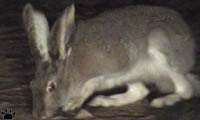 |
| In southern parts of the range, white-tails
don't turn white. Sangre de Cristo Mts., New Mexico. |
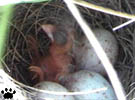 |
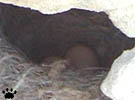 |
 |
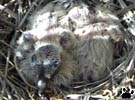 |
| Nests and chicks of
Great Plains birds, left to right: horned lark (Eremophila alpestris),
rock wren (Salpinctes obsoletus), barn swallow (Hirundo rustica),
mourning dove(Zenaida macroura). |
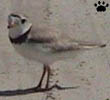
|

|
Birds are less diverse, but some are
endemic and very interesting, especially the prairie-chicken. |
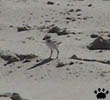
|
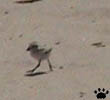 |
| Piping plover (Charadrius melodus),
Ogallala, Nebr. |
Piping plover chicks, Ogallala, Nebraska. |
 |
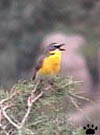 |
 |
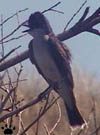 |
 |
 |
Birds of the Great Plains,
upper row, left to right: yellow-breasted chat (Icteria virens, 2 photos),
red-winged blackbird (Agelaius phoeniceus), Eastern kingbird (Tyrannus
tyrannus), American goldfinch (Carduelis tristis); middle row: McCown's
longspur (Calcarius mccownii), lark bunting (Calamospiza melanocorys);
bottom row: lark sparrow (Spizella grammacus), house wren (Troglodytes
aedon), common nighthawk (Chordeiles minor), Swainson's hawk (Buteo
swainsoni), Northern flicker (Colaptes auratus). |
 |
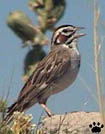 |
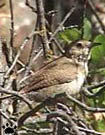 |
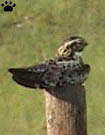 |
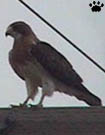 |
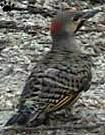 |
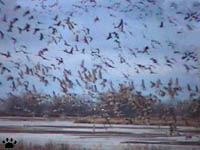
Every spring, hundreds of thousands of sandhill
cranes (Grus canadensis) stop at Platt River on
their way north. |
Sandhill cranes of Nebraska are also a popular
tourist attraction.
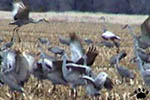
Dancing sandhill cranes,
Platt River, Nebraska. |
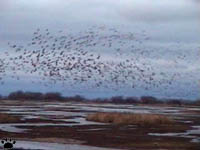
They are just one of dozens of bird species that
use the Great Plains flyway. This route is
particularly important for waterbirds and waders. |
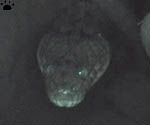
Northern water snake (Nerodia
sipedon), Ovid, Colorado. |
Reptiles and amphibians are more numerous in the
southeastern part of the prairie zone, while only a few species make it to the
Northern Plains. Even widespread snakes, lizards, and toads can be rare and very
difficult to find. Some amphibians only briefly show up on the surface after spring
rains. |
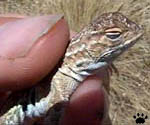
Lesser earless lizard (Holbrookia
maculata), Elkhart, Kansas. |
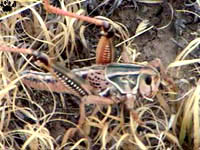
|
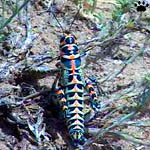
|
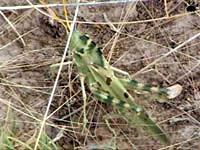
|
| Grasshoppers of Southeastern Colorado,
left to right: Brachystola magna, Dactylotum bicolor, Tropidolophus
formosus. |
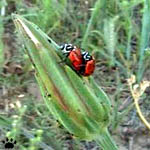
Lady beetles (Hippodamia
convergens), Boulder, Colorado. |
Insects, however, are everywhere. In late summer
you can sometimes count up to ten species of grasshoppers within one square meter
(10 sq. feet). They, too, were originally more diverse in the eastern part of
the Plains, but now many tallgrass species became rare due to habitat loss, pesticides,
and replacement of native plants by introduced species. |

Variegated fritillary (Euptoieta
claudia), Boulder. |
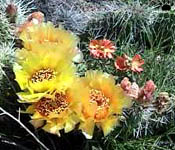 |
Despite the losses, beautiful wildflower
displays can still be seen in parts of the Plains.
 |
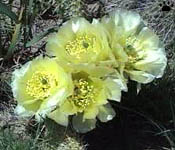 |
| Prickly pear cacti of
Pawnee Nat'l Grassland, Colorado, left to right: Opuntia fragilis, O.
strigii, O. polyacantha. |
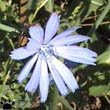 |
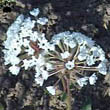 |
 |
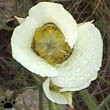 |
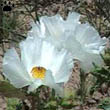 |
 |
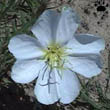 |
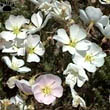 |
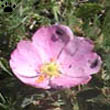 |
 |
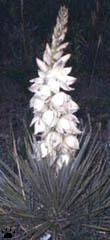 |
Plants of theColorado
shortgrass prairies, native and introduced, top row, left to right: Cichorium
intybus, Abronia iragrans, Calochortus nuttallii (2 photos),
Argemone polyanthemus; second row: Camissonia sp., Oenothera
sp. , O. deltoides, Rosa carolina, Euphorbium sp.; third
row: Yucca glauca (2 photos), Smelowskia sp. with Machaeranthera
sp. (middle photo); fourth row: Helianthus laetiflorus, H. petiolaris,
Leucocrinum montanum, Chrysanthemum sp., Grindelia squarosa;
bottom row: Penstemon sp., Liatris punctata, Nuttalia decapetula,
Circium discolor, C. pumilio.
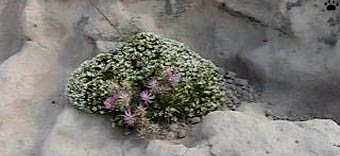 |
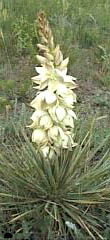 |
 |
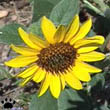 |
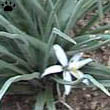 |
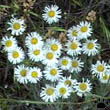 |
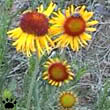 |
 |
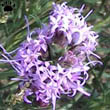 |
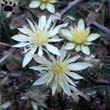 |
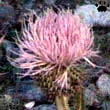 |
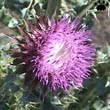 |
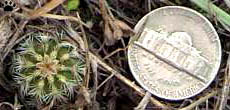
Baby Mamillaria cactus, Boulder, Colorado.
Part 16. The Great Basin
Back to Part 14
Home
|